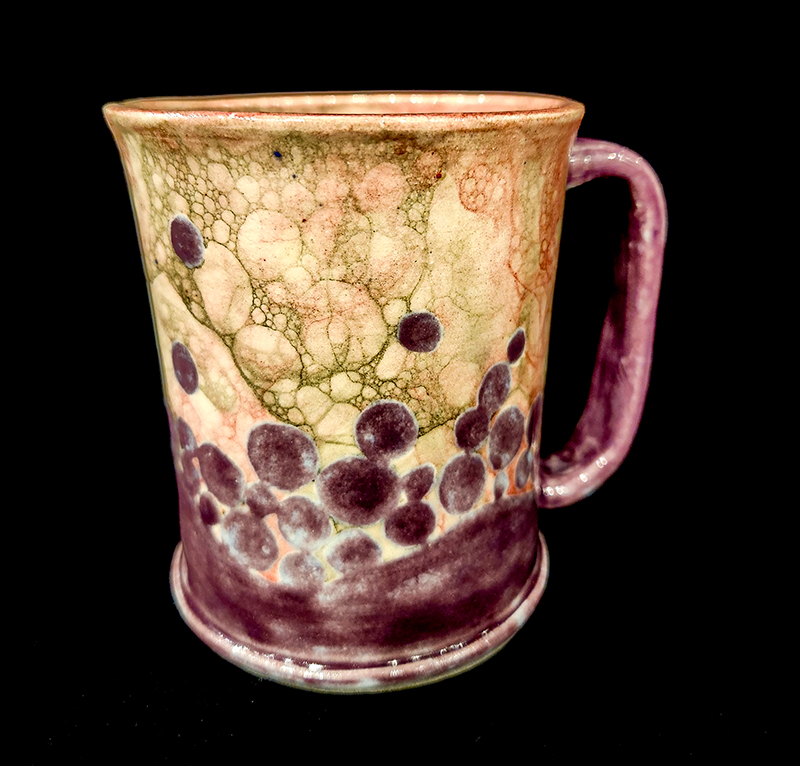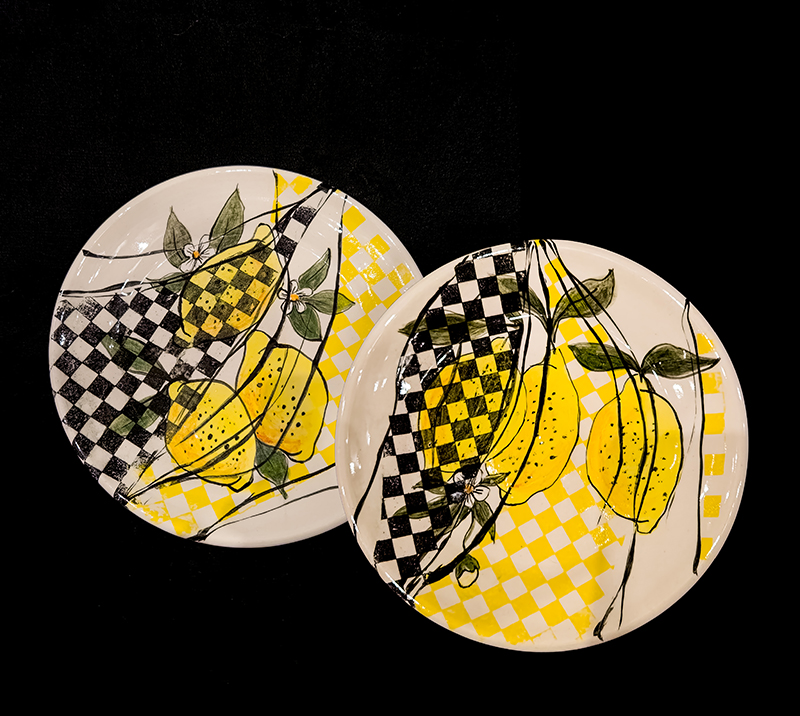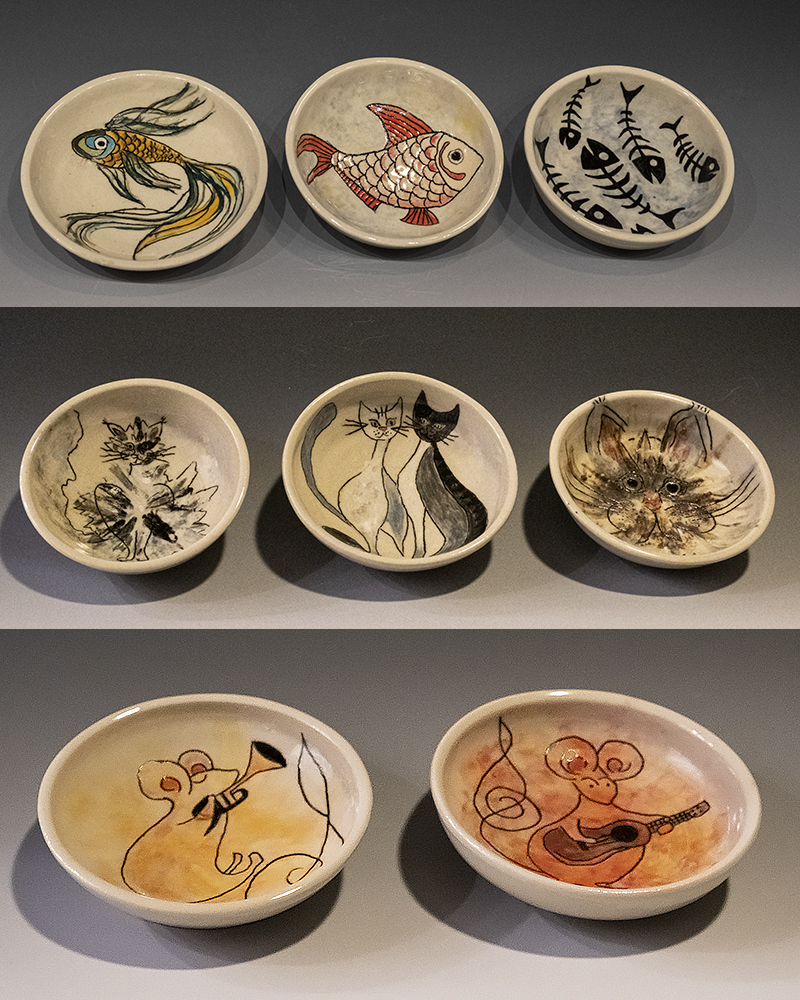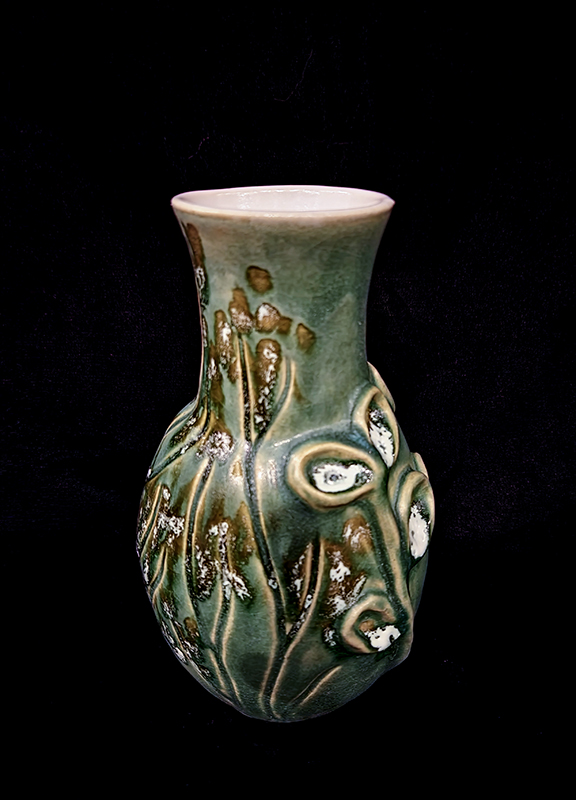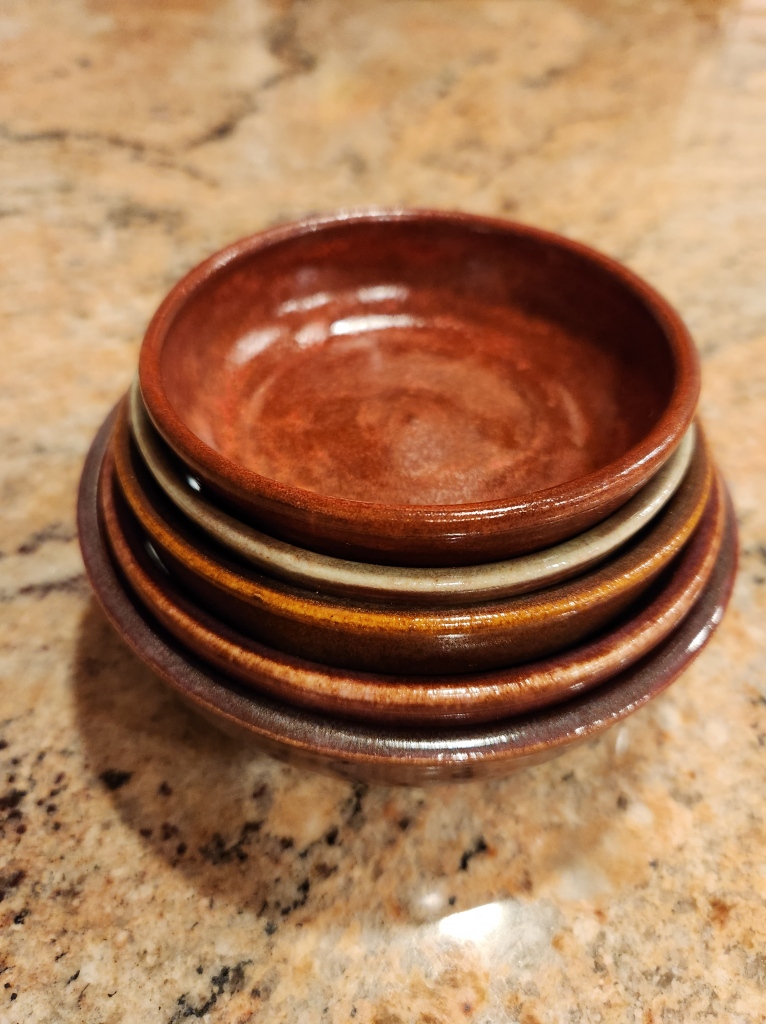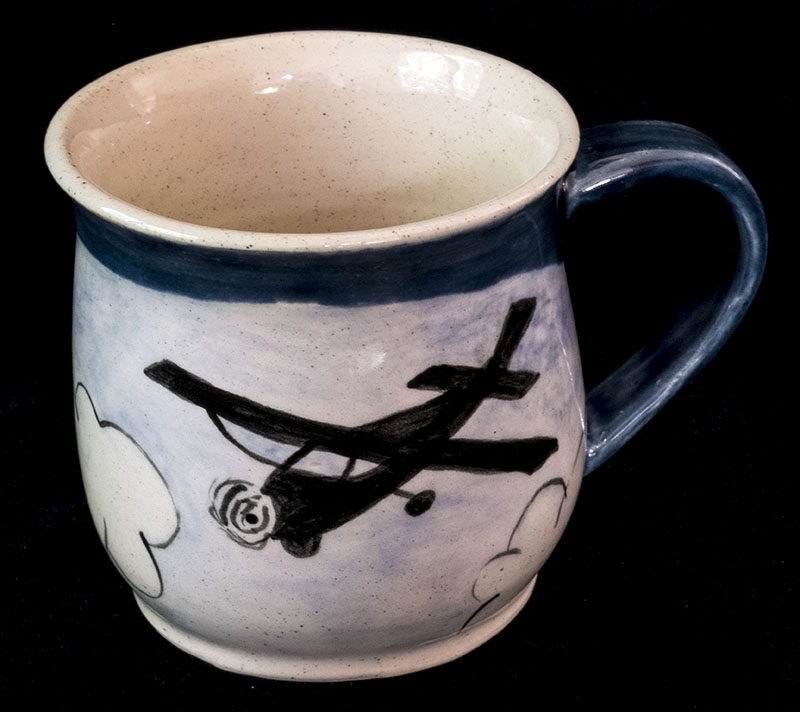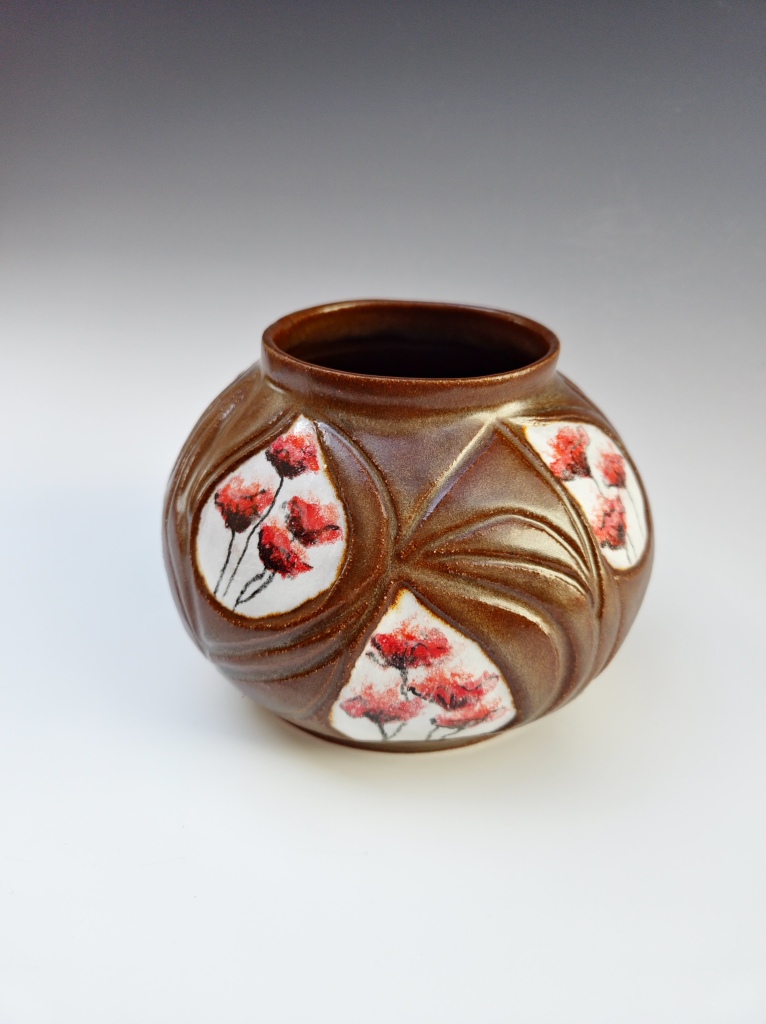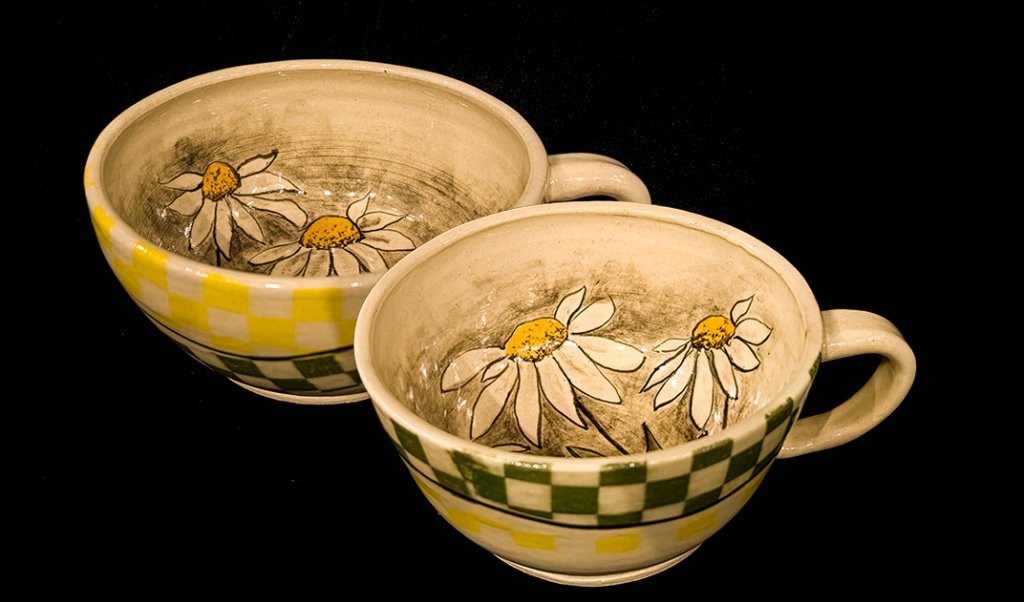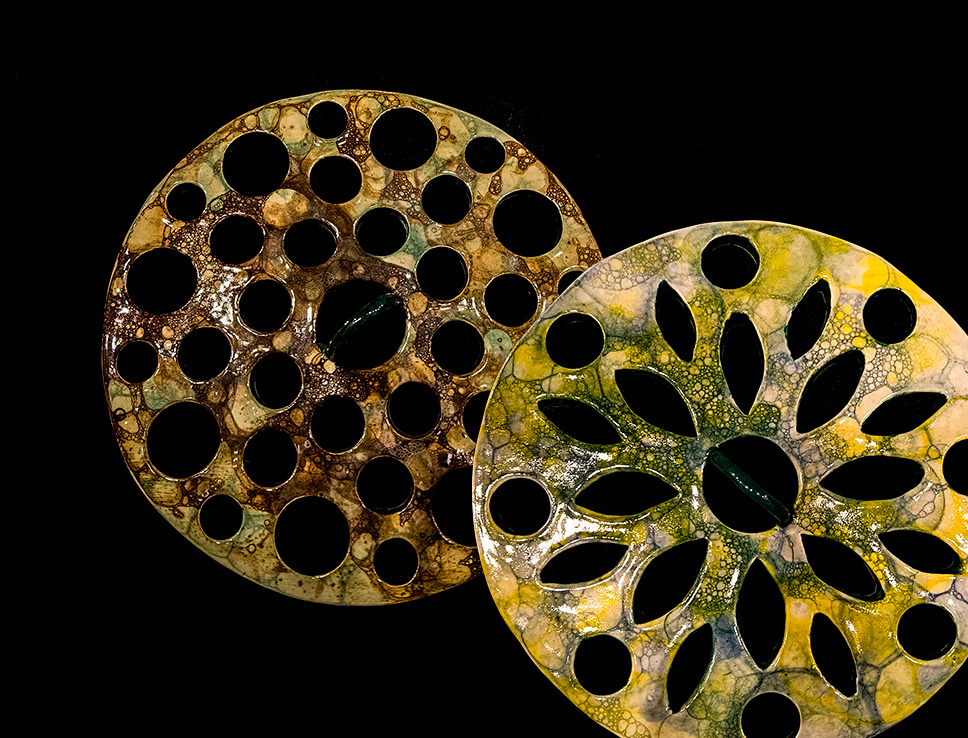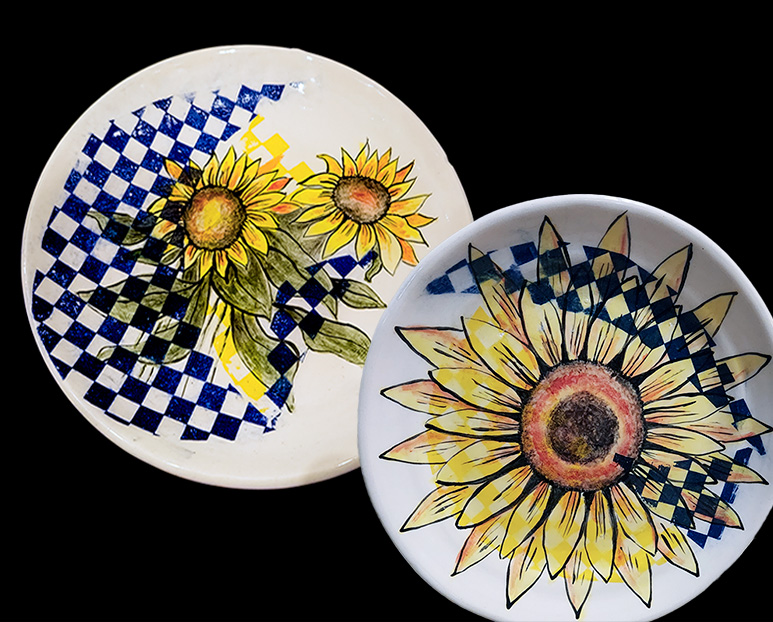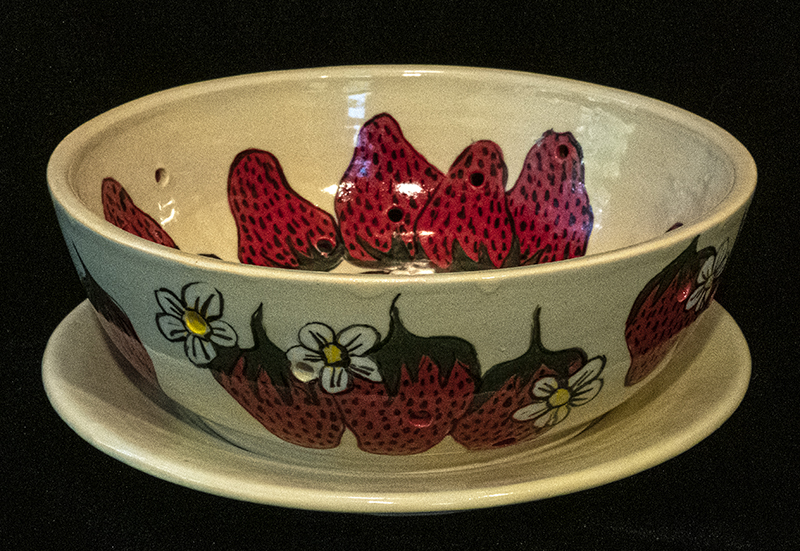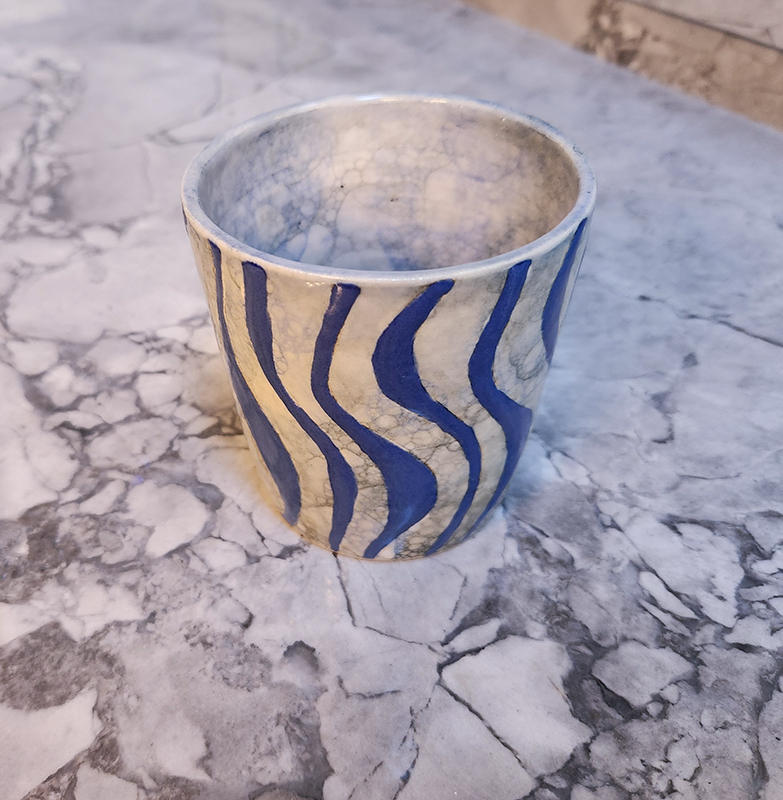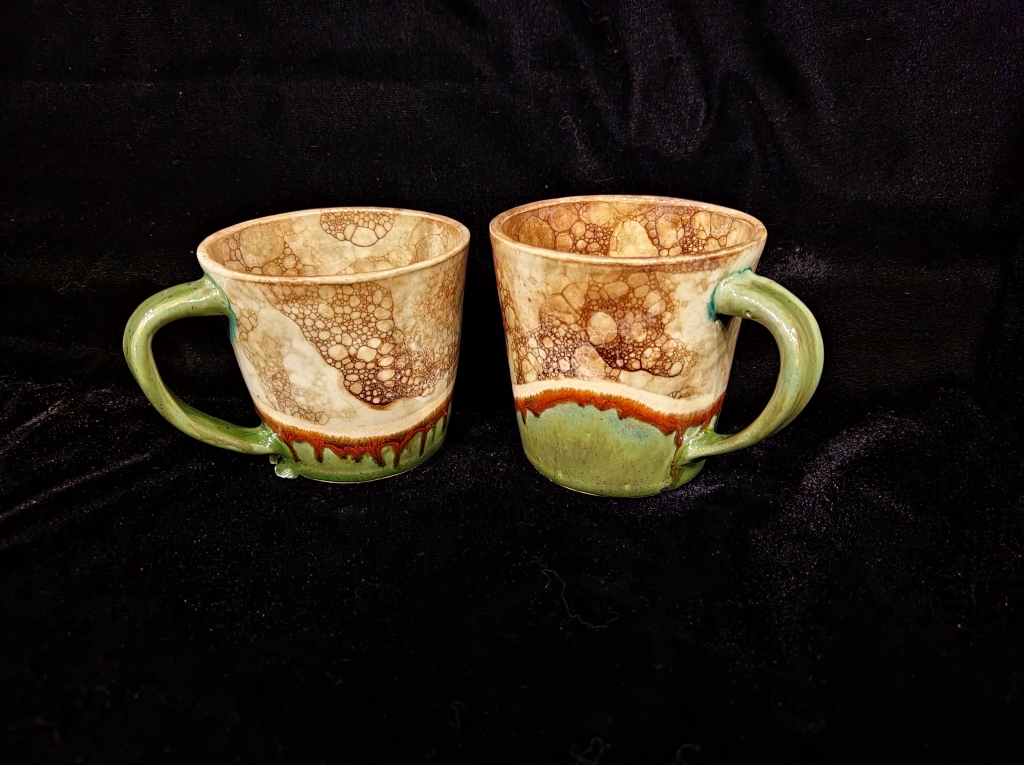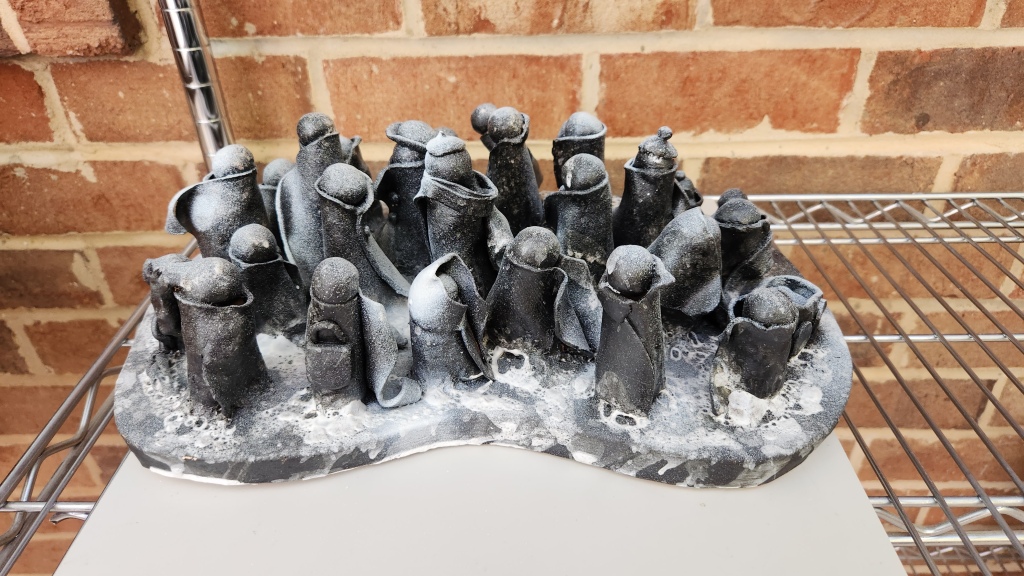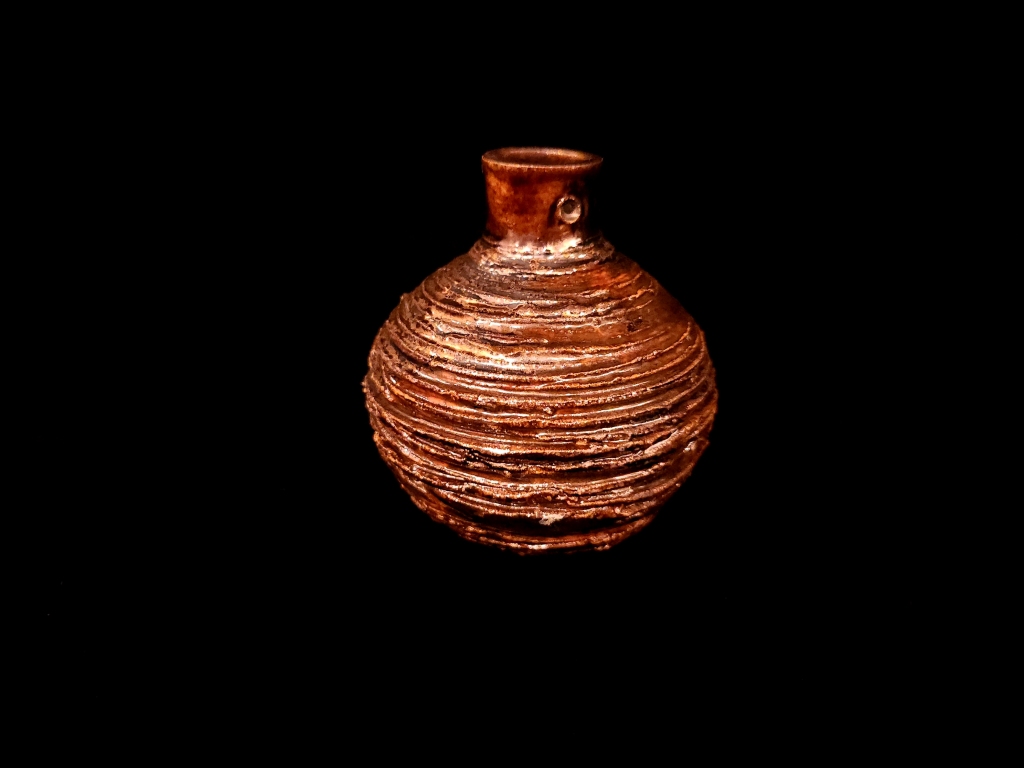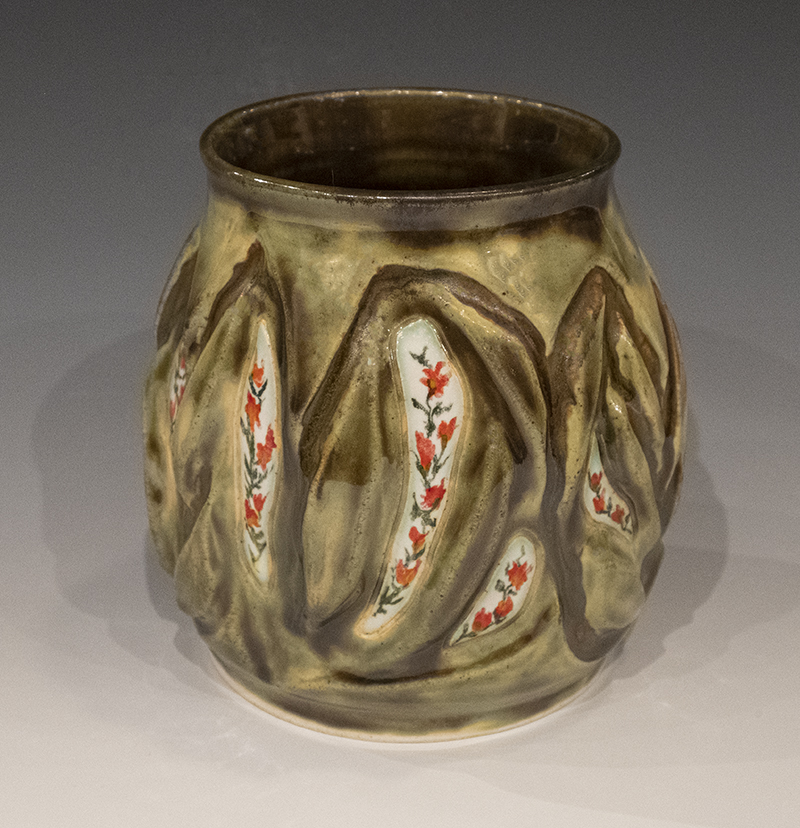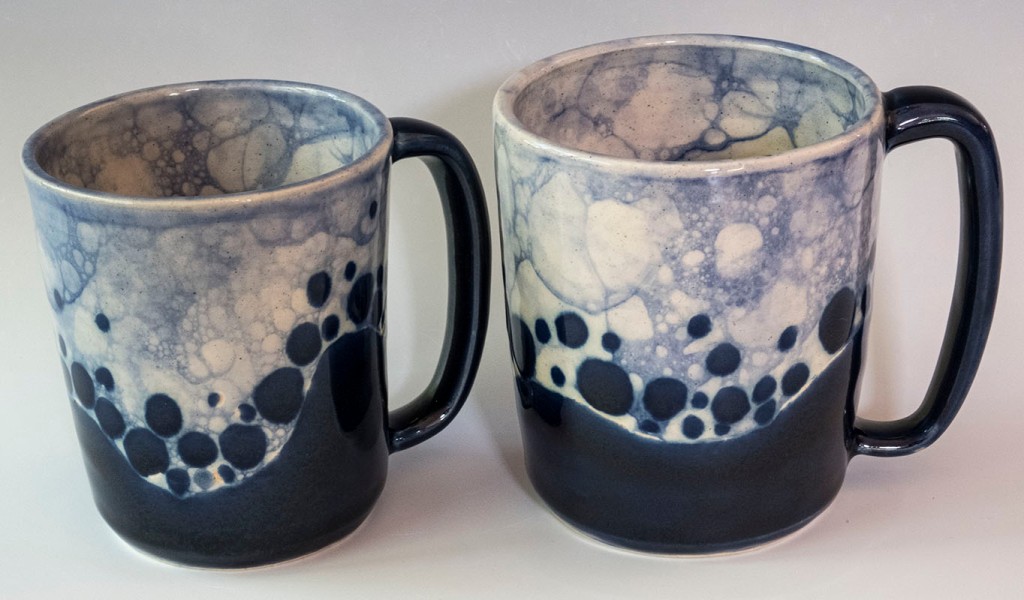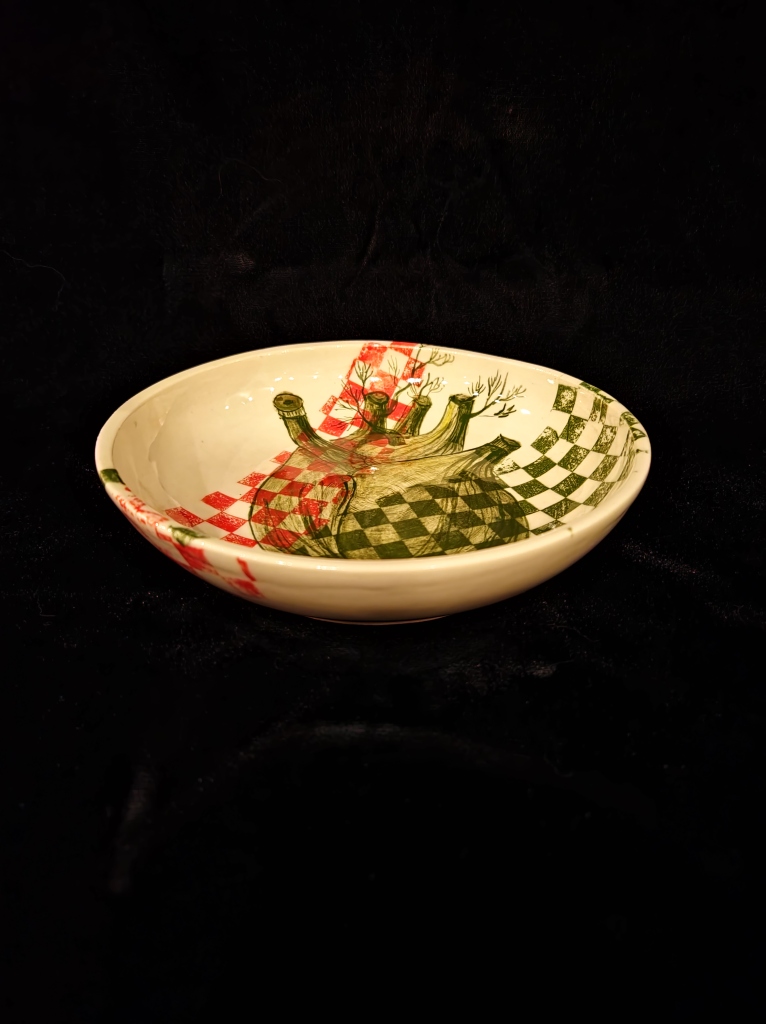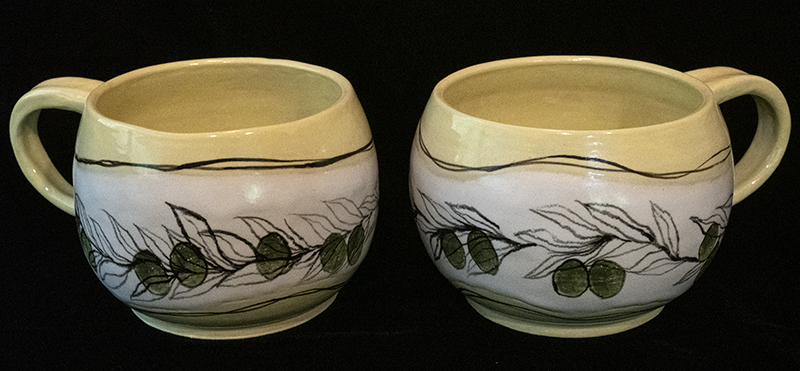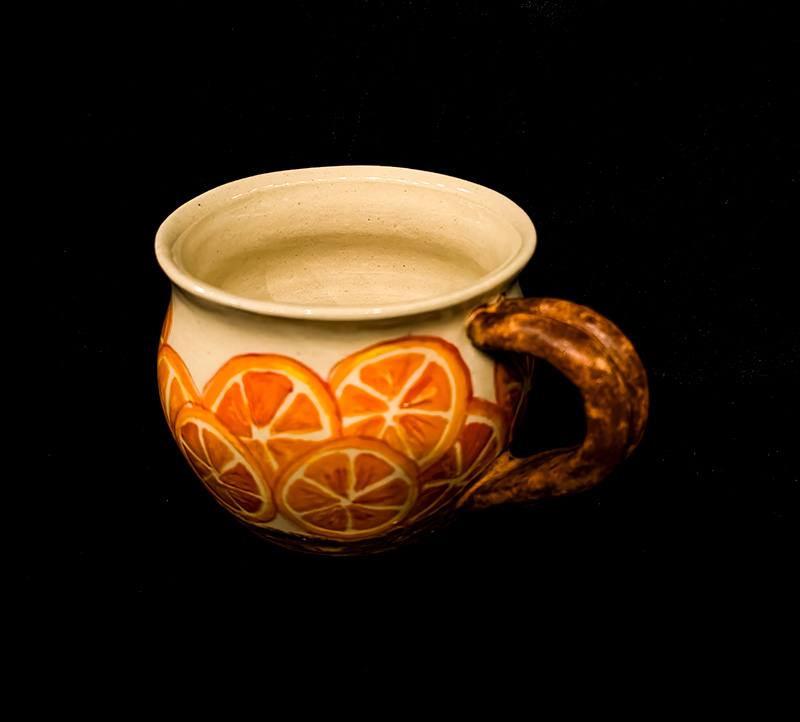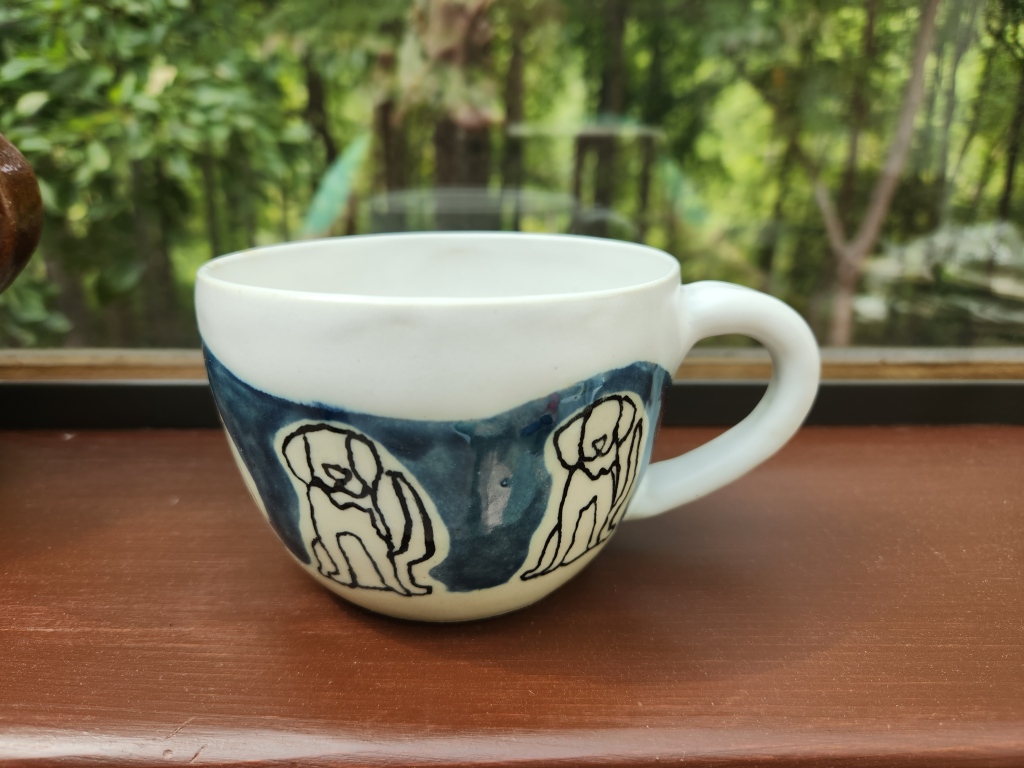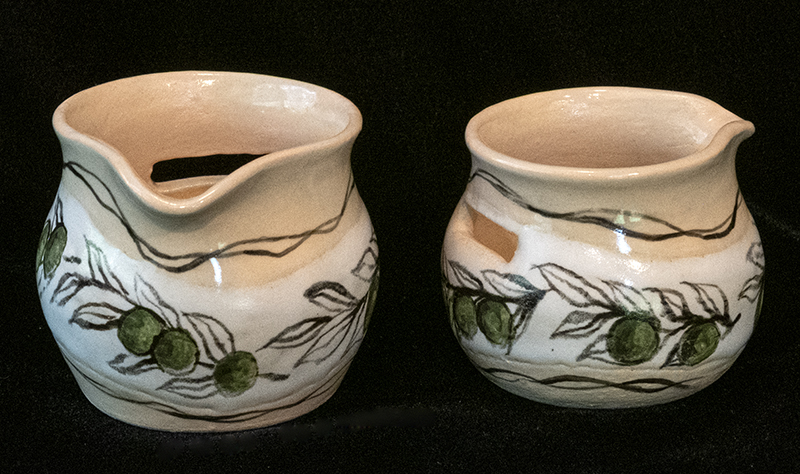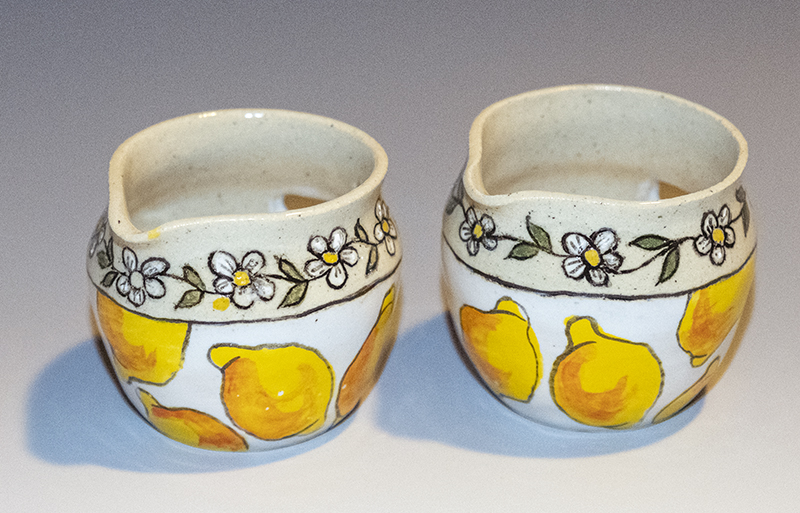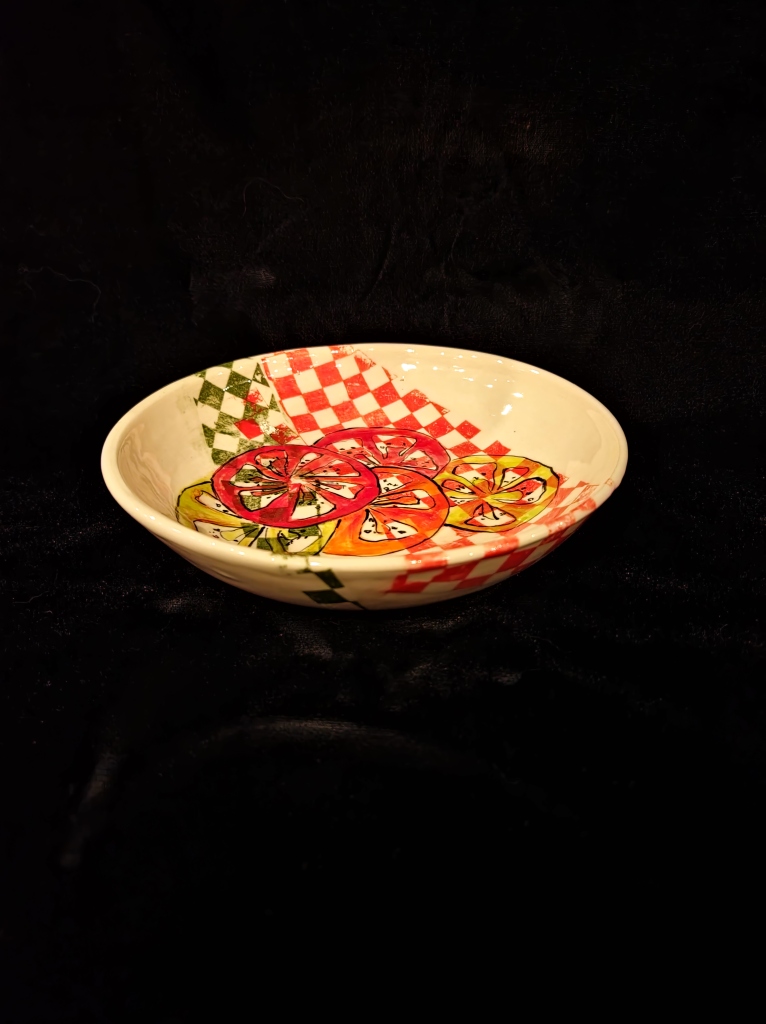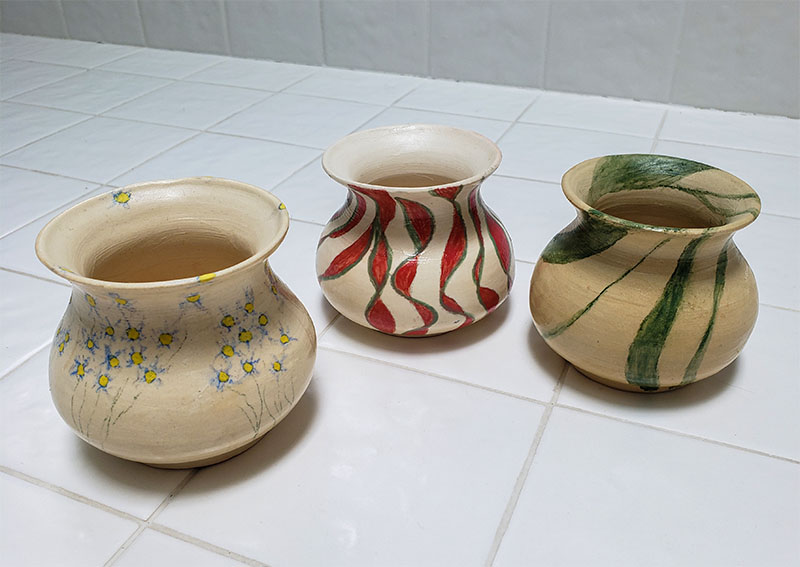Whew! I finally finished my second project for the Dynamic and Asymmetrical Wheel course. I won’t show you the early exploratory pieces (which are now in the trash), but only the final finished pieces that make up the main body of the work. A lot of thought and experimentation went into this project.
I decided to use my lifelong love of rocks and geology as the inspiration for this work. Let me tell you about the time I blew out the shocks in the car ferrying home quite a number of rocks I had collected on the north coast of the Atlantic…well maybe not. But suffice it to say that I have a fascination with earthly constructions and its components. Perhaps that is what led me into ceramics. After all, what am I working with if not pulverized rocks?
What am I am attempting to do is to give the impression of stratified rocks (such as in the cutaway of cliff), solid rock (as in, for example, granite), and even pebbly rocks (think moraine at the bottom of a glacier). As much as possible, I am trying to invoke a feeling of movement. Water and/or sky may have sneaked in as well.
I said I was experimenting. My initial attempts involved trying to marry up a stoneware clay with porcelain, but it didn’t work because they dried at such different rates causing way too many alarming cracks. (Trash, but I learned something before going farther.) So then I used the same clay for both the bottom layers and the solid tops. I had never used this clay before, so it was going to be a surprise as to how it would react to the homemade and commercial glazes I used.
The common denominator for all of the pieces is the solidity and stability of solid rock–that is, the white overlay portions of each pot. When I first started using this clay, I thought it was a red clay. But after those first initial attempts, I realized that it was more of a dark buff stoneware that had a lot of manganese in it, as evidenced by the speckles that rose to the surface after firing. I wasn’t sure how white I could get it to be. So I put a few coats of white underglaze on those top “solid rock” sections before bisquing. In most cases. I also tried porcelain slip and on one, white glaze (by accident). I then covered those areas with several coats of white opaque glaze before firing to cone 6. I was pleasantly surprised! The result of the white underglaze under white glaze is a beautiful matte surface reminiscent of soapstone, only smoother. The porcelain slip under white glaze turned out glossy. The white glaze under white glaze is also glossy. My favorite, hands down, is the matte “soapstone.”
The bowls pictured at the top are not actually two bowls, but opposite sides of the same bowl. Here I am using blue and green, which could indicate sky, or water, or stylized rock formations, or all of these. I let the clay show through in the carved areas to add to the impression of rock. This bowl has the soapstone top and inside.
The very small abstract vase in the second group is the only piece that is not stoneware clay. It is porcelain. I was still at the experimental stage. I went wild by using 7 different glazes. This one survived and in fact has been snatched up by a friend.
The two mugs have the soapstone tops and insides, but on these I let the different glazes I used overlap. Aside from the slightly VanGoghian look of the blues fuzzing into each other, I’m not a fan.
The next grouping shows three vases. This is actually one vase. I made two different lids for it. This also features the soapstone look, but with a twist. I was using my very runny faux metallic glaze near the top and I think my grubby fingers rubbed some into the white flowing down the body. The result is not unpleasant. It’s just slightly dark and more matte than other pieces with this underglaze/glaze combination. I carved the bottom portion of the vase to leave raised circles (rocks) and then applied a homemade magnesium crawl glaze over the dark brown glaze on those raised portions.
The next two vases again show the clay in the carved stratifications, but the white tops are slightly different. On the pink, black, and red vase, I used white slip on the bottommost white layer and white glaze on the topmost one. You can see the difference in the look and feel. In the vase on the right, the white portion is where I goofed and applied white glaze to the pre-bisque piece. It came out glossy with a blurring of the speckles.
The double flower pot shown last is a bit of a departure from the others, but here I was aiming for tumbled rocks with my zinc crawl glaze. The white top and inside is again the soapstone.
I’m having fun with these and am in the process of making more in this style. Experimenting again, of course!
